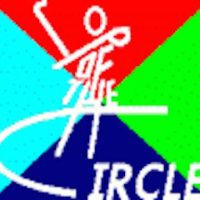I knew early on Rise above the net: on youth volleyball by Peter Bristotte was going to be a challenging read. It begins with a fairly detailed and wordy introduction. Things didn’t get any easier from there. Frankly, this book needed an editor – both for content and some typo/grammatical issues. It’s listed at over 650 pages!
This isn’t to say there aren’t good bits. You just have to weed through a lot of verbiage to get there.
The content
Chapter 1 is a kind of survey of Western philosophy and how it can link to coaching. There are a few interesting observations, but my guess is most readers will at best skim this part.
The philosophy carries over somewhat into Chapter 2, where the focus is largely on becoming a coach. The author no doubt will inspire argument with the opinion that coaches must have college degrees.
Chapter 3 is about research. It’s a dense chapter! The concepts discussed include blocked vs. variable, meta-cognition, spaced vs. massed practice, retrieval practice, and contextual interference. The end of the chapter is basically a list of prominent researchers and their contributions. With a lengthy bibliography, as well.
Chapter 4 starts off talking about curriculum, but then wanders around. I’m not entirely sure if it ever really locked in on any real point.
Then there’s Chapter 5. When I flipped to it I was pleased to see a quote from John Kessell as the chapter intro. Then I looked down in my Kindle app and saw the estimated reading time listed at 56 minutes. By comparison, Chapter 4 was something like 38 minutes, and that was definitely long (at least for me). Needless to say, I groaned a bit. The titular focus was Fundamentals. It started off talking about the value of game-like training, which I’m definitely in favor of. Then most of the chapter was a skill-by-skill breakdown. Each skill took up several pages, which is why it’s such a long chapter.
Offensive systems are the primary focus of Chapter 6, which is marginally shorter than Chapter 5. The 6-6, 4-2, and 5-1 all get coverage. Then Chapter 7 goes into defense and defensive systems. The author describes things in some ways new to me, but it was easy enough to folllow.
Chapter 8 turns the focus to what the author terms intangibles. Basically, it’s psychology. Going from very detailed chapters immediately prior, this one was strange. It struck me as quite superficial by comparison. Kind of like, “Here’s a bunch of books you can read on the subject.” It’s not until the latter part of the chapter that I felt like the author was really saying something in their own voice.
Next up was statistics in Chapter 9. The author covers both team and individual level stats, as well as how they’re different for beginners vs. experience players. The recommended stats to track are the usual ones, which in this day and age may actually come off as being quite simplistic for more advanced readers.
Strength and Conditioning is the subject of Chapter 10, which is another long one (my Kindle said 1hr 16). It starts with a fairly lengthy discussion of the value of physical fitness, going so far as to talk about World Health Organization (WHO) guidelines.. From there the author has a fairly detailed discussion of the three different energy systems involved in volleyball – ATP-CP, glycolytic, and aerobic – and work:rest ratios before carrying on through a number of other topics. This is a pretty intense chapter that ends with A LOT of references.
In Chapter 11 the focus turns to practice planning. It starts off with a story about the company Kodak as part of a general discussion on the value of planning. That rolls into talking about training principles like biological individuality, adaptation, progressive load, and, specificity. The subjects of transfer, whole vs. part, and random vs. blocked training (again) also come into the conversation. After this foundational piece, the chapter then moves on to how to put a practice plan together.
Chapter 12 is in large part an explanation of the history and current state of Sports Science. The ecological approach, which is at the core of what Rob Grey talks about in How We Learn to Move, and the videos here, is given a lot of space.
Parents get the spotlight in Chapter 13, which is the last.
Recommended?
Would I recommend this book? That’s a tough question. As I said at the top, there are definitely good bits. You’re very likely to learn from it – if you can maintain your focus and attention. It’s that last part where I struggle. It’s just such a massive book with a lot to wade through to get to the meaty things you’re after. That’s the cause for my hesitation.
If you’re the type who’s able to sit down and dive into a book for chunks of time, then this book could be very useful. If you struggle to sustain your attention that way, I’m thinking you’d be better off going in a different direction.
6 Steps to Better Practices – Free Guide

Subscribe to my weekly newsletter today and get this free guide to making your practices the best, along with loads more coaching tips and information.















